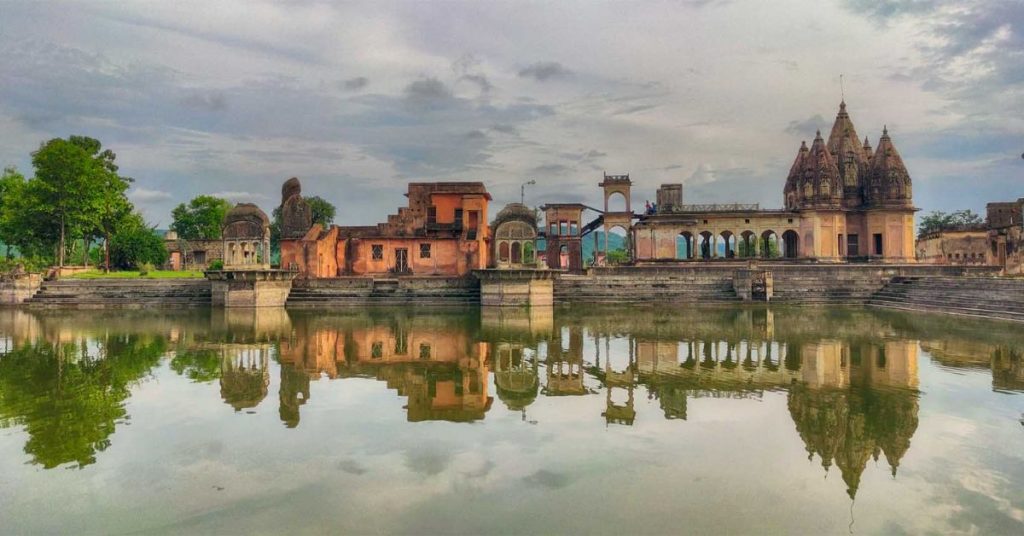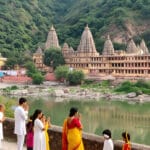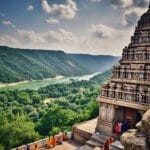Find out the best time to visit Chitrakoot for pleasant weather, festivals, and sightseeing. Plan your trip for a memorable and comfortable experience.
Chitrakoot, the sacred town resting on the banks of the Mandakini River, is not just a destination—it’s an experience of spiritual awakening, mythology, and natural beauty. Known as the ‘Hill of Many Wonders’, Chitrakoot is deeply associated with the exile period of Lord Ram, making it a magnet for pilgrims, devotees, and seekers alike.
To make the most of your visit, timing matters. Whether you’re planning a spiritual retreat, a historical exploration, or a peaceful vacation, understanding the best time to visit Chitrakoot will help you immerse yourself in all it has to offer.
Best Time to Visit Chitrakoot

Ideal Seasons: Weather Guide to Chitrakoot
Winter (October to February): The Most Pleasant Time
Best Months: October to February
Temperature Range: 7°C to 25°C
Why Visit: Winter is undoubtedly the best time to explore Chitrakoot. The weather is cool, comfortable, and perfect for outdoor activities such as Kamadgiri Parikrama, boat rides on the Mandakini River, and long temple visits.
What to Expect:
- Clear skies and scenic surroundings
- Ideal for sunrise and sunset aartis at Ram Ghat
- Comfortable for visiting hilltop temples like Hanuman Dhara
- Lesser humidity and no rainfall
Travel Tip: Carry a light woolen shawl or jacket, especially for early mornings and evenings.
Summer (March to June): Hot and Humid
Temperature Range: 25°C to 45°C
Weather Conditions: Scorching afternoons, warm nights
Why Avoid: Summers in Chitrakoot can be uncomfortably hot, especially during the day. Pilgrimage activities like parikrama or temple climbing can be exhausting.
What to Expect:
- Low crowd density, making it quieter
- Harsh sunlight and dry heat
- Dehydration risks if not properly prepared
Travel Tip: If you must travel during this time, schedule visits during early morning and late afternoon hours. Stay hydrated and wear a wide-brimmed hat.
Monsoon (July to September): Green But Wet
Temperature Range: 22°C to 30°C
Weather Conditions: High humidity, occasional downpours
Why Consider: Monsoon brings out the lush greenery of Chitrakoot, with flowing streams and rejuvenated landscapes. While travel becomes slightly challenging, nature lovers and photographers may find this season appealing.
What to Expect:
- Slippery parikrama paths
- Occasional flooding near riverbanks
- Risk of transport delays due to heavy rains
Travel Tip: Carry waterproof footwear and rain gear. Avoid cave visits like Gupt Godavari if there’s a risk of flooding.
Major Festivals in Chitrakoot: A Divine Celebration
Chitrakoot transforms during religious festivals, becoming a center of vibrant devotion, ritual, and cultural expression. Visiting during one of these festivals offers a deeper spiritual connection.
1. Ram Navami (March/April)
Celebrating the birth of Lord Ram, this festival sees grand processions, kirtans, and temple rituals across the town.
Highlights:
- Ram Janmotsav at Kamadgiri and Ram Ghat
- Folk performances and storytelling
- Huge influx of pilgrims from across India
Best Time for Devotees seeking cultural immersion.
2. Diwali (October/November)
Chitrakoot, where Lord Ram is believed to have spent Diwali in exile, is illuminated with diyas, lamps, and bhajans during this festival.
Highlights:
- Spectacular lighting at temples
- Fireworks and spiritual plays
- Evening aarti with thousands of floating diyas on the Mandakini River
Most Magical Atmosphere in Chitrakoot.
3. Makar Sankranti (January)
Thousands of devotees take a holy dip in the Mandakini to mark the transition of the sun. Charitable acts and community feasting are common.
4. Bharat Milap (October/November, during Kartik Purnima)
This unique local festival marks the emotional reunion of Lord Ram and Bharat. The event is reenacted near Bharat Milap Mandir with great devotion.
Highlights:
- Dramatic enactments of the Ramayana
- Mass pilgrimages and prayers
- Special aartis and devotional songs
Must-visit time for Ramayana enthusiasts.
Travel Tips for Visiting Chitrakoot
1. Plan Around Weather Conditions
The best months are October through February, especially if you’re planning a full day of temple visits and walking-intensive activities.
2. Book Accommodation in Advance
During festival seasons like Ram Navami and Diwali, hotels, dharamshalas, and ashrams fill up quickly. Book well in advance for a comfortable stay.
3. Respect Local Customs
Chitrakoot is a deeply religious site. Dress modestly, maintain silence in temples, and respect temple queues and rituals.
4. Footwear & Clothing
Wear comfortable walking shoes or slip-on sandals for temple visits. Carry a scarf or shawl to cover your head if needed in temples.
5. Local Transport & Navigation
- Use auto-rickshaws or cycle rickshaws for local movement.
- Some areas are best explored on foot, especially Kamadgiri Parikrama.
- Shared taxis available from Satna, Karwi, and Chitrakoot Dham rail stations.
6. Pack Essentials
- Medicines and first aid
- Reusable water bottle
- Travel map or offline navigation app
- Sunscreen and mosquito repellent
Summary: When to Go & Why
| Season | Best For | Not Recommended For |
|---|---|---|
| Winter | Pilgrimage, sightseeing, festivals | – |
| Summer | Peaceful, crowd-free visits | Elderly travelers, long walks |
| Monsoon | Scenic beauty, spiritual solitude | Slippery paths, transport issues |
Final Thoughts
The best time to visit Chitrakoot is not just about weather—it’s about what you seek. If your goal is spiritual devotion, visit during festivals. If you crave tranquility and heritage, winter offers the perfect climate. Each season brings a different facet of Chitrakoot to life. With the right timing, your journey can be both comfortable and transformational.






